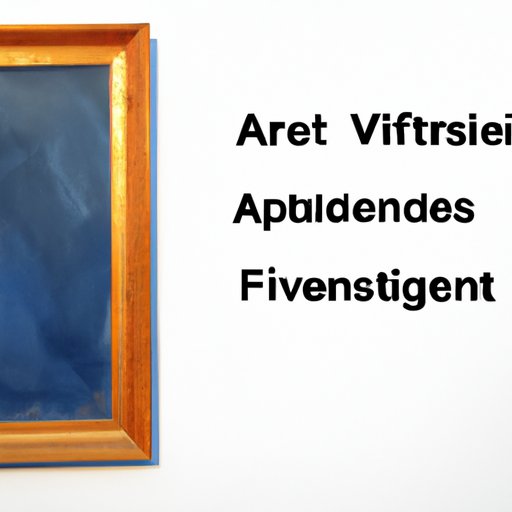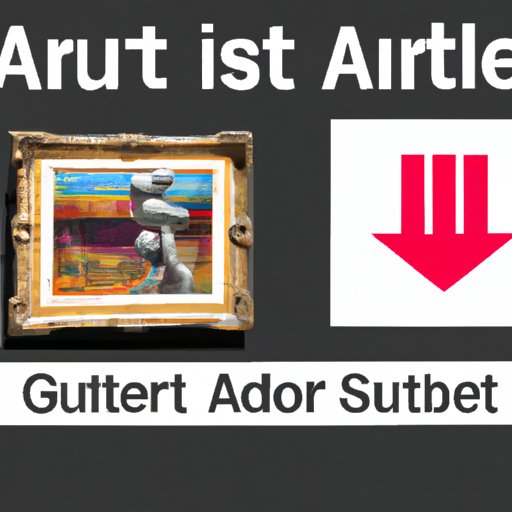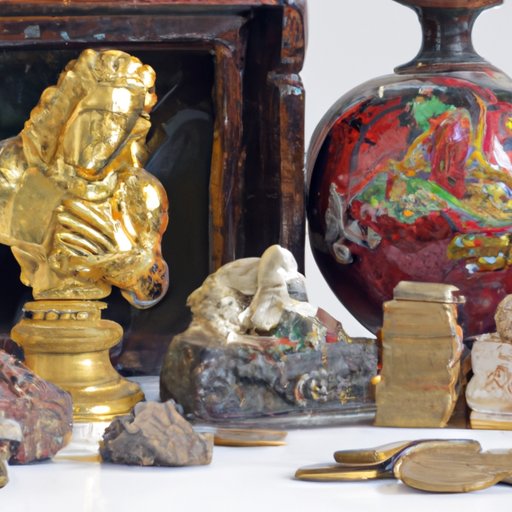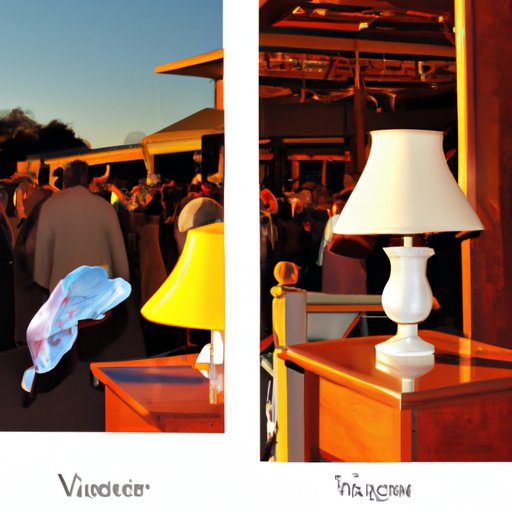Introduction
Investing in art can be a great way to diversify your portfolio and make money while enjoying beautiful works of art. However, it is important to understand the different types of art investments available and the potential risks involved.
This article will discuss the various types of art investments available, the risks associated with each, and the potential benefits of investing in art.
Research the Types of Art Investments Available
There are several different types of art investments available. These include collectibles and antiques, investment funds, emerging artists, galleries and auction houses.
Collectibles and Antiques
Collectibles and antiques are popular investments for those looking to buy art without spending a fortune. These items often appreciate in value over time and can provide a good return on investment. However, it is important to research the item carefully before making a purchase to ensure that it is an authentic piece of art.
Investment Funds
Investment funds are another option for those looking to invest in art. These funds typically invest in a variety of artworks from different artists and genres. This type of investment provides more diversification than investing in a single work of art.
Emerging Artists
Investing in emerging artists is another way to invest in art. Investing in emerging artists can provide a great opportunity for growth as these artists may become more successful over time. It is important to research the artist’s portfolio and track record to ensure that you are investing in a quality artist.
Galleries and Auction Houses
Galleries and auction houses are another way to invest in art. These institutions offer a wide selection of artwork from established and emerging artists. It is important to research the gallery or auction house before making any purchases to ensure that they have a good reputation and are offering quality artwork.
Understand the Risks Involved
As with any investment, there are risks associated with investing in art. It is important to understand the potential risks before investing in order to make an informed decision.
Market Volatility
The art market can be volatile and unpredictable. The prices of art can fluctuate significantly due to changes in supply and demand. It is important to be aware of these fluctuations when considering investing in art.
Lack of Liquidity
Art investments can be illiquid, meaning that it can be difficult to sell an artwork when needed. This means that investors should be prepared to hold their investments for the long term.
Unexpected Expenses
Investing in art can involve unexpected expenses such as framing and restoration costs. It is important to factor these costs into the overall cost of the investment.

Consider Investing in an Art Investment Fund
Investing in an art investment fund can provide a great opportunity for growth. These funds typically invest in a variety of artworks from different artists and genres.
Advantages of Investing in Funds
Investing in an art investment fund has several advantages. These include diversification, professional management, and lower fees. Diversification reduces risk by spreading investments across different artists and genres. Professional management can help to ensure that investments are managed properly and efficiently. Lower fees can also be beneficial as some art funds charge lower fees than individual investments.
Disadvantages of Investing in Funds
Investing in an art investment fund also has some disadvantages. These include lack of control over investments and lack of access to certain types of artwork. Investors do not have direct control over how the funds are managed, which can lead to decisions that may not be in the investor’s best interest. Additionally, some types of artwork may not be accessible through art funds.
Invest in Artwork from Emerging Artists
Investing in emerging artists can be a great way to make money while also supporting young talent. Investing in emerging artists can provide a great opportunity for growth as these artists may become more successful over time.
Benefits of Investing in Emerging Artists
Investing in emerging artists has several benefits. These include the potential for high returns, the ability to support young talent, and the potential to discover a masterpiece. Investing in emerging artists also allows investors to become involved in the art community and to learn more about the art world.
Challenges of Investing in Emerging Artists
Investing in emerging artists also has its challenges. These include the risk of investing in an artist who does not become successful, the difficulty of finding reliable information about the artist, and the potential for the artwork to depreciate in value. It is important to research the artist’s portfolio and track record before investing.

Buy Art Directly from Galleries or Auction Houses
Buying art directly from galleries or auction houses is another way to invest in art. This method allows investors to select the artwork they want to invest in and can provide access to higher quality artwork.
Pros of Buying Art from Galleries or Auction Houses
The main benefit of buying art from galleries or auction houses is the ability to view and select the artwork in person. This allows investors to assess the quality of the artwork and to make an informed decision. Additionally, galleries and auction houses often have experts on hand to answer questions and provide advice.
Cons of Buying Art from Galleries or Auction Houses
The main disadvantage of buying art from galleries or auction houses is the cost. Prices can be higher than other methods of investing in art, and buyers may need to pay additional fees such as shipping and handling costs. Additionally, galleries and auction houses may not always have the selection of artwork that investors are looking for.

Invest in Collectibles and Antiques
Investing in collectibles and antiques is another way to invest in art. These items often appreciate in value over time and can provide a good return on investment.
Benefits of Investing in Collectibles and Antiques
The main benefit of investing in collectibles and antiques is the potential for high returns. These items can appreciate in value over time and can be sold for a profit. Additionally, collectibles and antiques can be used as decorations, providing both aesthetic and financial value.
Challenges of Investing in Collectibles and Antiques
The main challenge of investing in collectibles and antiques is the risk of buying fake or counterfeit items. It is important to research the item carefully before making a purchase to ensure that it is an authentic piece of art. Additionally, collectibles and antiques may not always be easy to find or sell.
Conclusion
Investing in art can be a great way to diversify your portfolio and make money while enjoying beautiful works of art. However, it is important to understand the different types of art investments available and the potential risks involved. This article has discussed the various types of art investments available, the risks associated with each, and the potential benefits of investing in art.
(Note: Is this article not meeting your expectations? Do you have knowledge or insights to share? Unlock new opportunities and expand your reach by joining our authors team. Click Registration to join us and share your expertise with our readers.)
